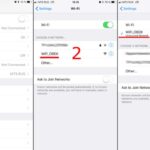For car enthusiasts and professional mechanics alike, understanding what’s happening under the hood is crucial. Modern vehicles are complex systems, and accessing their diagnostic data requires the right tools. Enter the ELM327 interface, a cornerstone of automotive diagnostics, renowned for its broad compatibility with OBDII protocols. This article delves into why the ELM327 interface is essential for anyone looking to tap into their vehicle’s onboard diagnostics system.
Understanding OBDII Protocols: The Language of Your Car
OBDII, or On-Board Diagnostics II, is a standardized system implemented in most vehicles manufactured after 1996. It’s designed to monitor various vehicle systems, from engine performance to emissions, and report any issues through a standardized diagnostic port. To ensure universal compatibility, OBDII utilizes several communication protocols. These protocols are essentially languages that different vehicle manufacturers and systems use to transmit diagnostic data. Key OBDII protocols include:
- ISO 9141-2: Common in European and Asian vehicles.
- ISO 14230-4 (KWP2000): Widely used in various vehicle brands.
- ISO 15765-4 (CAN): The current standard protocol, prevalent in most modern vehicles.
- SAE J1850 PWM & SAE J1850 VPW: Protocols primarily used by Ford and General Motors respectively.
Having a tool that can communicate using all these protocols is vital for comprehensive vehicle diagnostics. This is where the ELM327 interface shines.
The ELM327 Interface: A Universal Translator for OBDII
The ELM327 interface is not a protocol itself, but rather a microcontroller chip that acts as a translator between your vehicle’s OBDII system and an external device, such as a smartphone, tablet, or computer. Its significance lies in its ability to support all standard OBDII protocols. This universal compatibility means a single ELM327 interface can work with a vast range of vehicle makes and models, making it an incredibly versatile tool for diagnostics.
Whether your vehicle uses CAN, KWP2000, or any other OBDII protocol, an ELM327-based device is designed to establish a connection and retrieve valuable data. This data can include:
- Diagnostic Trouble Codes (DTCs): These codes pinpoint specific issues within the vehicle, helping to identify problems quickly and efficiently.
- Real-time sensor data: Access live data from various sensors throughout your vehicle, such as engine temperature, RPM, speed, and oxygen sensor readings. This is invaluable for monitoring vehicle performance and identifying anomalies.
- Freeze frame data: Captures sensor readings at the moment a DTC is triggered, providing a snapshot of the conditions when the fault occurred.
- Vehicle performance parameters: Measure acceleration, fuel consumption, and other performance metrics.
- Emission readiness status: Check if your vehicle is ready for emission testing, ensuring compliance and avoiding potential failures.
Unleashing the Power of ELM327 with Car Scanner Apps
To leverage the capabilities of an ELM327 interface, you need a compatible software application. Car Scanner apps are designed to communicate with ELM327 interfaces and present the retrieved OBDII data in a user-friendly format. These apps transform your ELM327 interface and mobile device into a powerful diagnostic tool, offering features like:
- Customizable dashboards: Display the gauges and charts that are most relevant to you, allowing for personalized monitoring.
- Extended PIDs (Parameter IDs): Access manufacturer-specific data beyond the standard OBDII parameters, unlocking even deeper insights into your vehicle’s operation.
- DTC reading and resetting: Diagnose issues by reading fault codes and clear them after repairs are made.
- Mode 06 testing: Access ECU self-monitoring test results, aiding in proactive maintenance and cost-effective repairs.
- Comprehensive sensor monitoring: View all available sensor data on a single screen for a complete overview of your vehicle’s health.
To get started, you’ll need an OBD2 ELM327 compatible adapter. These adapters plug into your vehicle’s diagnostic port and communicate wirelessly (via Bluetooth or Wi-Fi) with your smartphone or other device running a car scanner app. While many affordable ELM327 adapters are available, it’s advisable to choose reputable brands like Kiwi 3, Viecar, or V-Gate to ensure reliable performance and avoid potential compatibility issues often associated with cheaper clones.
Conclusion: Empowering Vehicle Diagnostics with ELM327
The ELM327 interface’s support for all OBDII protocols makes it an indispensable tool for anyone wanting to understand their vehicle better. Coupled with a feature-rich application like a Car Scanner app, it provides access to a wealth of diagnostic information, performance data, and vehicle health insights. Whether you are performing routine maintenance, diagnosing a warning light, or simply curious about your car’s performance, the ELM327 interface unlocks a world of automotive data, putting you in control of your vehicle’s diagnostics.

